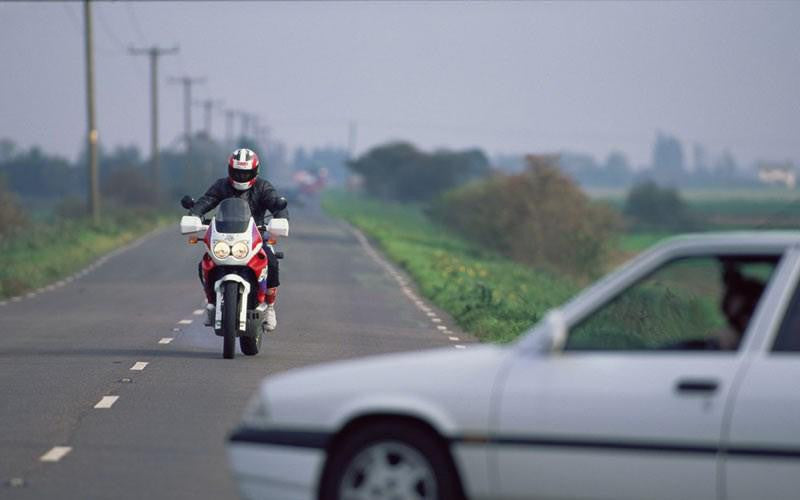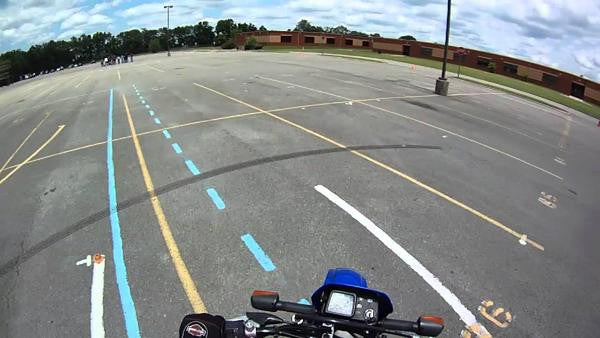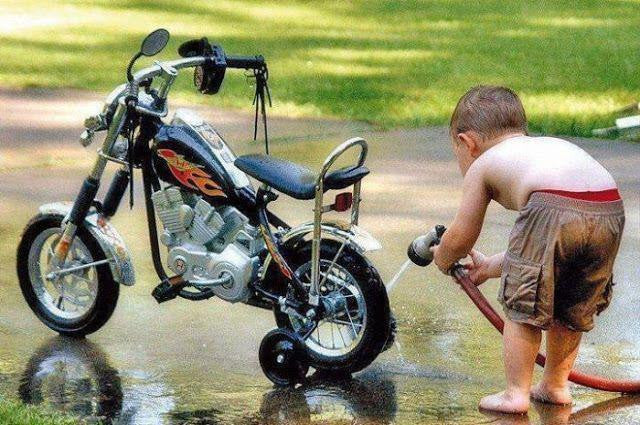
HNP’s Top Emergency Braking Tips – Part II

(Image from: motorcylenews.com)
Recap & Introduction to Part II
Picking up from where we started in the last installment, here’s a quick recap of what we covered in the last edition:- Braking techniques cover more than 50% of the course content of many riding courses.
- Start with Bike braking basics first, focusing on the type of bike one rides.
- Next is to learn the correct technique to apply brakes
- Imbibe pro-active riding skills
- Finally, consider factors which impact braking performance
Or read post on HNP’s Top Emergency Braking Tips – Part I
Progressive or 4-staged brakingOf all advanced braking techniques, progressive braking is perhaps the most important of all to learn and practice. It is to be used every time one prepares to come to a stop. The simplest explanation is the one provided by New Zealand Motorcycle Safety Consultants at megarider.com.
At stage one, think of being a fair distance away from a traffic light which has just turned amber. You would then apply brakes very gently to be able to come to a gradual stop as you approach the Stop Line.
Stage two braking is akin to one being closer to the Stop Line as the traffic light turns amber, this would require a firmer pull on the brakes to be able to still come to a smooth stop.
Stage Three is similar to a situation when you are still closer to Stop Line and planning to cross it but the light suddenly turns amber and you decide its better to risk running a light. In this case, you would start with Stage 1 & 2 braking and quickly move on to applying firm pressure with a strong pull on the levers, to be able to come to a stop.
Stage Four braking is pretty much the same as giving it all you got or to use the full braking power available, such as in the case of a light turning red when you are very close to the Stop Line. If you have gone through the stages, even if your rear wheel skids or locks, the weight of your bike would have transferred to the front by now and it would be a lot easier to control the resultant skid.
Trail Braking

Trail braking is a technique used by sports riders on the track to slow the bike from speed, such as when they are on straights, to a much lower value, like when approaching the apex of a corner.
In this technique, at the start of a braking marker near a corner, a rider would apply full braking force while the bike is straight, and gradually reduce the force on the brakes as the bike leans into the corner, approaching zero braking force at the apex and applying throttle and ease out of the corner smoothly.
This is a tricky technique and requires lots of practice but can come in handy even on public roads in some hairy situations.
Engine Braking

This is a bit of a controversial topic, and one would imagine that leaving the clutch engaged would help to slow the bike down rapidly.
We recommend pulling in the clutch though. This is primarily due to two main reasons – first, while its true that the engine will brake the motorcycle a bit when the throttle is off. it will equally resist any further deceleration of the motorcycle.
Second reason is related to habits and safety – different engines display different engine braking ranging from strong to very mild. It can be a bit of a risk if a rider learns to rely on engine braking as a habit. Also, in certain emergency situations if the throttle is accidentally turned on even slightly, a disengaged clutch would ensure no harm comes of it.
In hilly areas though, while going downhill, it is always a good idea to downshift to a lower gear and use engine braking rather than your brake lever to avoid heating up the brake discs or drums.
We advise readers to weigh the pros and cons of this technique and use their own judgment while choosing this technique in their riding style.
Braking on abnormal terrain and at corners

On slippery, gravelly or wet surfaces the basic technique remains the same, but you need your powers of observation, most notably your sight and hearing at the maximum alertness – look out for signs which might require you tailor the progressive to the surface you are on and listen out for whell locking or skid sounds. The braking force still needs to be firm, but may need to applied more gradually depending on the surface conditions.
Braking at corners need to be treated with respect. Refer to the section on trail braking and consider its application.

